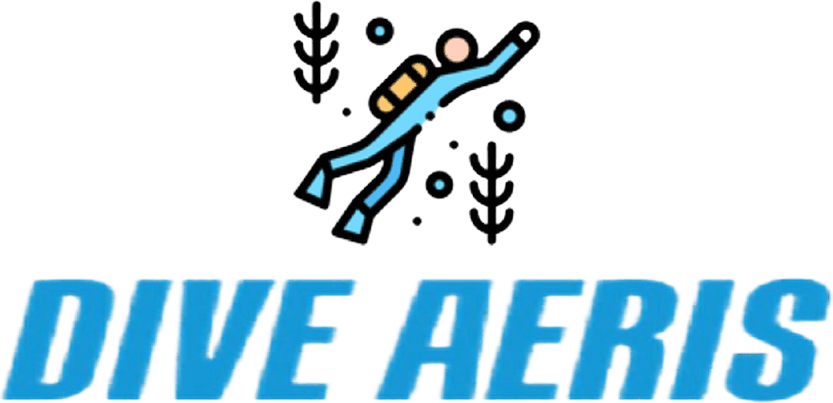Scuba diving has always been an interesting and adventurous sport, nevertheless requiring good physical strength and mental stability. Training and maintaining a strong body are very important to help you dive safely and handle worse situations well.
You don’t always need intensive practice, but it’s better to improve your health by following a reasonable exercise program and schedule. Additionally, you must also enhance the strength and flexibility of particular body parts that need to be active underwater.
What do divers do for exercise? Is scuba diving good exercise? What are the useful scuba diving exercises?
It’s okay if you don’t know the answer to those questions, because I will show you all in this article. Let’s find it out!
Table of Contents
5 Basic and Useful Scuba Diving Exercises
There are several scuba diving exercises for divers, such as strength-enhancing, flexibility training, bodybuilding, and more.
If you figure out a suitable exercise and keep practicing consistently, you will be in good shape while improving your strength and skills. Here are some of the most basic but effective scuba diving exercises that many divers would practice.
1. Exercises for Calves and Toes
While scuba diving, many divers may suffer from cramps in their calves and toes. One of the common reasons is that these body parts are not strong enough to endure such intensity for a long time.
In order to overcome that situation, you are recommended to apply monkey toes exercise and calf raises to strengthen your calves and feet.
Monkey toes
Usually, divers will wear fins so that they can move underwater. The fin tip is normally sharp and small, so your toes might be pressed when wearing. Obviously, maintaining this situation for a long time will cause discomfort and even pain.
Therefore, the monkey toe exercise is suggested to help your toes get stronger. It will also prevent the risk of cramping when carrying the fins.
To get started, first, you need to put something small on the floor. Then, use your toes cleverly to pick up the item and hold it for 30 seconds to 1 minute. You can begin with the bigger stuff like socks, then gradually change to smaller items like pens.
For this exercise, you may need to repeat 3-5 times on each side. Practice at least twice a week for faster improvement.
You can refer to this tutorial video to understand how to do the exercise effectively!
Calf raises
Calves are very important for scuba diving since they directly affect the force of your leg when moving. Just like the toe, this place is prone to cramping if you don’t practice properly.
Calf raises are great exercises for strengthening your calves and are also very easy to practice. To start, you need to stand with your feet shoulder-width apart.
Next, slowly raise your heels and stand on your toes. Hold for a moment, then lower your legs back to the original position.
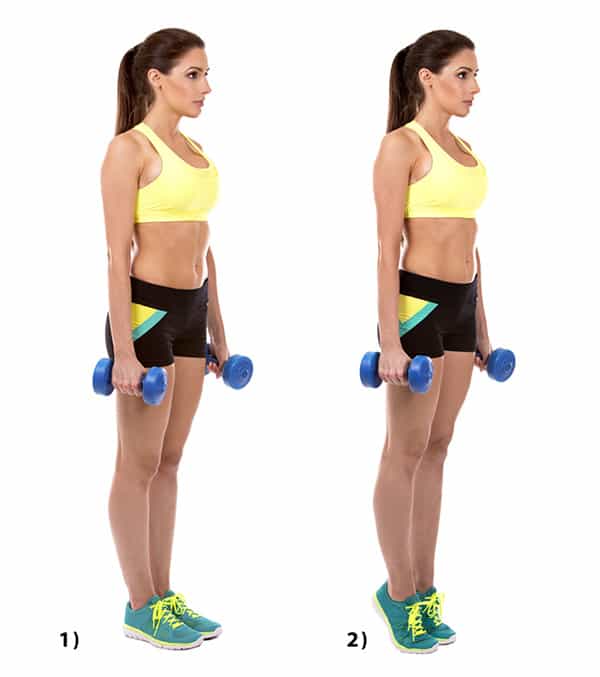
You can also challenge yourself by holding two small dumbbells in your hands or squatting. For effectiveness, you should work out 15-20 lifts with 3 sets and do it 3 times a week.
Here is a tutorial video so you can catch up easier!
2. Exercises for the Back
When diving, your back must be strong enough to carry the oxygen tank for a long time. Simultaneously, it also has to endure a great pressure from the water. Hence, you need to strengthen this body part to avoid pain.
Plank
This exercise impacts your whole body to strengthen your spinal column effectively while increasing the strength of the abdominal muscles. The strength and flexibility in this area will provide a greater enduring ability even under water pressure.
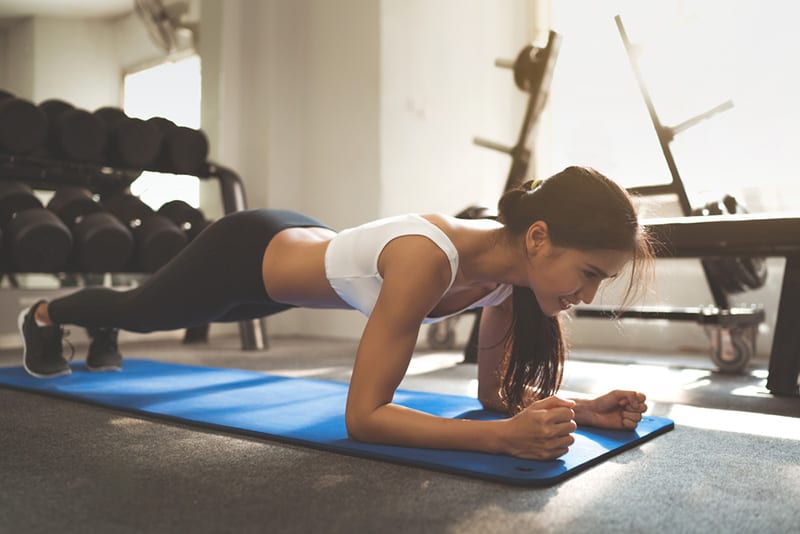
You have 2 ways to do it, including high and low plank. A high plank will have a push-up-like stance. Specifically, the hands and toes touch the floor and raise the body in a straight line.
Similarly, the low plank is done the same way, but now your forearms will be on the ground, and your elbows will be just below your shoulders.
No matter what way you are in, make sure your stomach is tight, your back and body are all in a straight line. At the same time, the buttocks should not be too high or too low. Hold the movement until you can’t do it anymore.
Here is how a professional does this workout!
Superman
To enhance the strength, flexibility and endurance of the back, you should apply Superman exercises. To start, first, lie with your face down on the floor. Then, straighten your arms along the length of your body.
Next, you raise your arms and legs simultaneously, hold like that for 1, 2 beats and then race back to the original position.
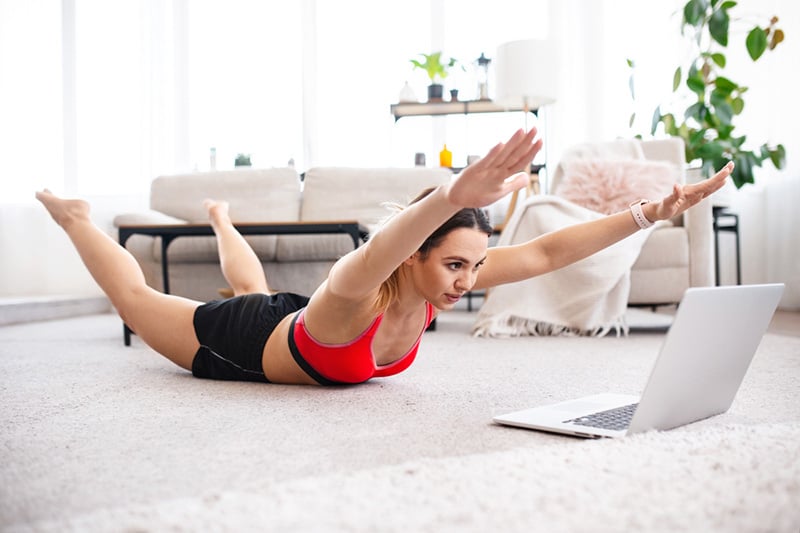
Or you can also bring your arms and legs up to let your back muscles get used to it slowly. Make sure to keep your first breath steady throughout the exercise. Try to maintain the exercise 2 to 3 times per week for the best results.
Superman is not a complex movement, so you only need a quick tutorial by watching this!
3. Leg Exercises
Legs play a crucial role when you are in the water because it is the part that works continuously to help you move, turn, go up, down, or stay balanced in one position.
Moreover, that part needs to be strong enough to climb up and down the boat’s steps against the water pressure and extra weight, while carrying a lot of equipment like scuba BCDs, oxygen tanks, and weight bags.
Therefore, improving the strength of your legs is very necessary. One of the effective moves that divers always choose to practice is the single-leg deadlift.
This exercise impacts the entire leg muscles. Hence, it will be quite painful for a while when you start, but your legs will become much stronger later on.
You may need a dumbbell for a greater impact on the desired muscle group. Use one leg to support, and then have your upper body slowly lean forward. Don’t forget to make sure your leg muscles are tight and your back is straight.
When your other leg is raised behind you, your dumbbells should touch the ground. Hold for some seconds, then return to the original position.
Perform 10-15 repetitions for each leg and maintain 2-3 times per week for effectiveness.
For more details, watch and explore how to do the operation in this video!
4. Shoulder Exercise
To carry oxygen tanks and other equipment, in addition to a strong back, you need a strong shoulder. Overhead Press will help you strengthen your shoulder easily.
You prepare an elastic band with a firm handle. Then, using your legs to hold the rope, you can start with one and then gradually switch to two legs when you get used to it.
Hold the handle with both hands then pull the rope up over your head. Also, when bringing the rope down, keep your elbows level with your shoulders.
This exercise is good for the biceps, helping your muscles become stronger. You should do 10 -15 reps per set and do 3 sets of each exercise. Plus, try to train them twice a week regularly.
Here is a guide on practicing Overhead Press for your reference!
5. Yoga & Cardio
If the above exercises only work for certain parts of your body, yoga and cardio are designed for the whole body. With yoga, the most important step is to learn how to breathe properly, which is also beneficial for scuba diving.
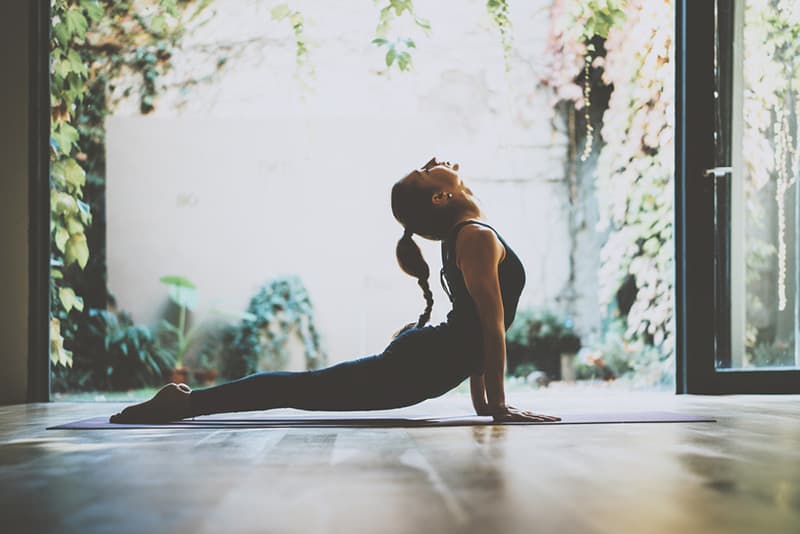
Besides physical benefits, yoga also helps with your mind to help you mentally relax. If you spend 15-20 minutes on yoga exercises every day, your health and flexibility will improve significantly.
Unlike yoga, Cardio focuses on your endurance and strength while helping your heart and lungs become better. Not as relaxing as yoga, these exercises will make you sweat a lot, so your body will release more toxins.
When practicing, you should go from simple to complex exercises so that your body can gradually get used to the intensity. Before that, a thorough warm-up to avoid injury and excessive pain is also essential.
FAQs
In this section, I will answer some common questions about scuba diving workouts you may want to know.
Is Scuba Diving a Good Workout?
Yes, scuba diving is very good as an exercise. To explain, when you are in the water, your muscles are active and pressed continuously, leading to a greater energy consumption, which is great for fitness.
What Muscles Do Scuba Diving Use?
When in the water, it seems that your muscles are all working and performing different tasks:
- Abs and back muscles for body lifting and diving equipment
- The glutes will help your legs work well to move in pure magic in the water.
- Some other muscles such as calves, shoulders, pecs, ankles, etc. also greatly support your sightseeing.
Is There a Weight Limit for Scuba Diving?
The answer is No! Diving is a sport that requires good physical strength, not fitness. This subject can impact weight and fitness, but is not significantly affected by weight. Therefore, no matter how heavy you are, as long as you are healthy, you can start.
How to Get in Shape by Diving?
To be in good shape, exercise is a must. Diving is probably a good workout method as it consumes a lot of your energy and impacts different parts of the body.
However, practice is not enough. Nutrition factors determine up to 60% of your weight. So, a proper diet with lots of vegetables, fruits, lots of water, and limited starch will give you the desired result.
Does Scuba Diving Require Strength?
Definitely essential! You have to carry many things, withstand the water pressure and stay underwater for a while. Therefore, a person without good physical strength cannot endure.
In addition, before becoming a professional diver, you have to go through extreme fitness tests. For example, you have to complete a 200m swim and 10-minute blast in the water to get a PADI certificate.
See also: Do You Need to Know How to Swim to Scuba Dive?
Conclusion
Scuba diving exercises do not require much fitness, but physical strength is very important. Hence, improving overall strength as well as training specific parts of the body are necessary.
There are several exercises for divers, and it’s your choice to practice what you like or what your body lacks. Keep working out and you will be healthy, strong, flexible and skillful!
If you find the above information useful, please share it with your friends! Each share will be the motivation for me to create more quality content.
Don’t forget to support other relevant content from my website.
Thanks for reading!
